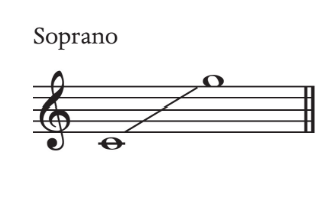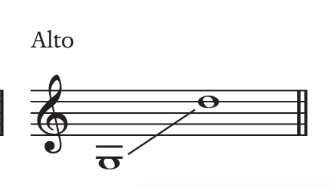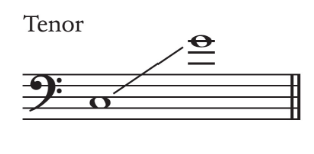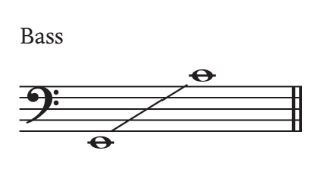Music Theory Exam I
1/18
There's no tags or description
Looks like no tags are added yet.
Name | Mastery | Learn | Test | Matching | Spaced |
|---|
No study sessions yet.
19 Terms
Root Position Inversion
no indication needed; root (tonic) in bass; (5/3); bass is doubled
First Inversion
3rd note in bass; 6/3 or 6; any note can be doubled
Second Inversion
5th note in bass; 6/4; typically the 5th is doubled
Root Position Seventh Chord
root (tonic) in bass; 7/5/3 (7)
First Inversion Seventh Chord
3rd note in the bass; 6/5/3 (6/5)
Second Inversion Seventh Chord
5th note in the bass; 6/4/3 (4/3)
Third Inversion Seventh Chord
7th note in the bass 6/4/2 (4/2)
Soprano Range
low C to high

Alto Range
low G to mid D

Tenor Range
mid C to high G

Bass Range
low E to high C

Major Scale Pattern
all scale notes are respective to the written key signature; W–W–S–W–W–W–S; 7 in scale is called the leading tone
Natural Minor Scale Pattern
all scale notes are respective to written key (relative minor) or written in with an accidental; flat the 3rd the 5th and the 6th; 7 in scale is called the subtonic; W—S—W—W—S—W—W
Melodic Minor Scale Pattern
minor scale that raises the 6th and 7th notes in ascending (7th becomes leading tone) and lowers them in descending (7th becomes subtonic); W—S—W—W—W—W—S
Harmonic Minor Scale Pattern
minor scale that raises the 7th in the scale; the 7th becomes a leading tone; W—S—W—W—S—A2—S
Diminished Triad Interval
m3/m3
Minor Triad Interval
m3/M3
Major Triad Interval
M3/m3
Augmented Triad Interval
M3/M3